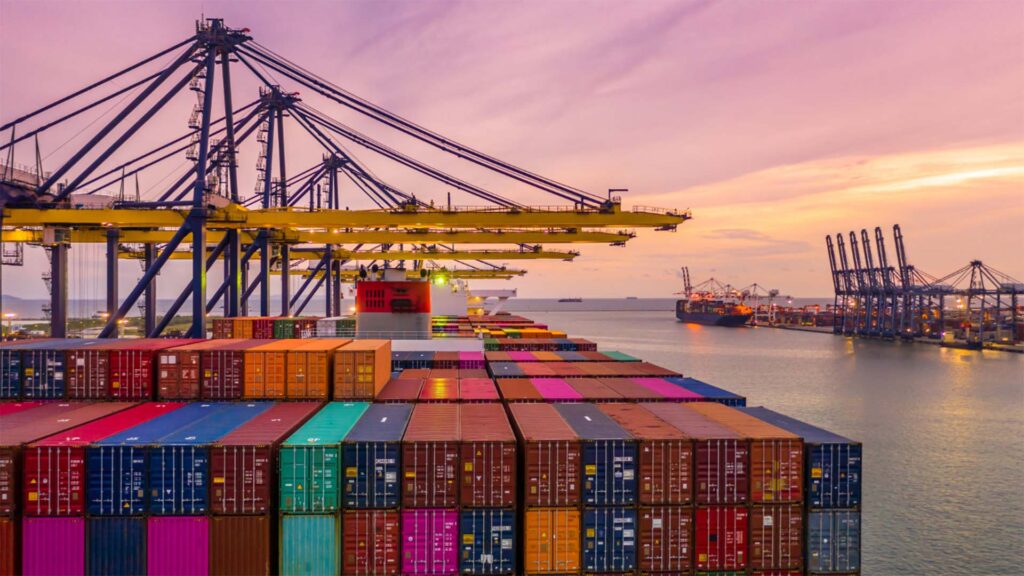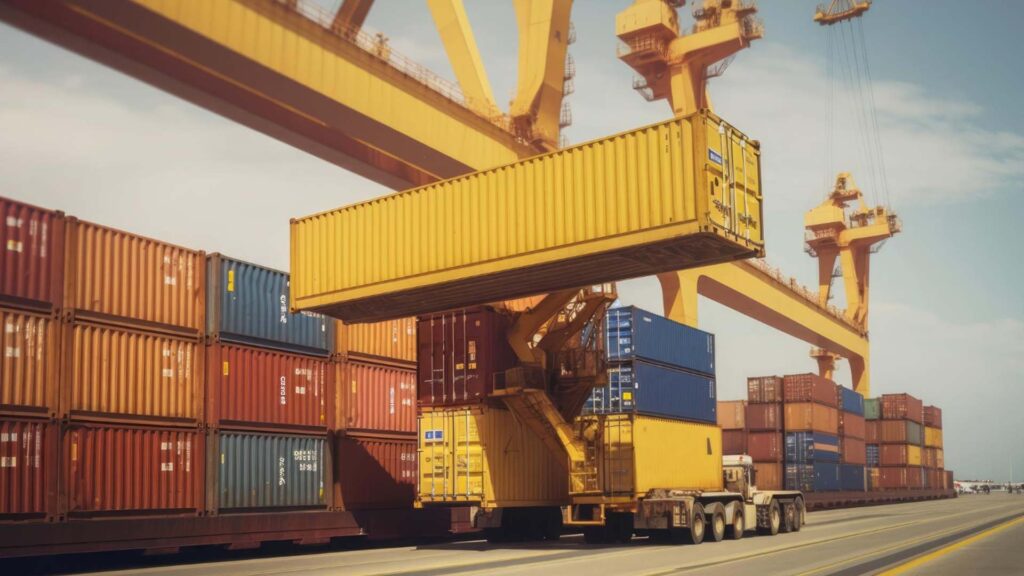How have shipping containers revolutionized the logistics industry? In the modern world of global trade and transportation, shipping containers have revolutionized how goods are moved across the seas and continents. These standardized, durable, and versatile metal boxes have become the backbone of the shipping industry, facilitating the efficient movement of goods from manufacturers to consumers. This blog will explore shipping containers’ significance, history, design, various types, and indispensable role in the global supply chain.
What are Shipping Containers?
Shipping containers are large, standardized metal boxes designed to transport cargo safely and efficiently over long distances, primarily by sea but also by land and air. These containers come in standardized sizes, the most common being the 20-foot and 40-foot lengths, each 8 feet wide and 8.5 feet high. Their standardized dimensions allow for easy handling, stacking, and securement during transportation, making them a critical asset in the logistics industry.
The Evolution of Shipping Containers
The concept of shipping containers dates back to the early 20th century, but it was in the 1950s that standardized containers gained popularity. The credit for their widespread adoption goes to Malcolm McLean, an American entrepreneur who designed the first modern container in 1956. This container, known as the Intermodal Container, was a steel box that could be easily loaded, stacked, and transferred between ships, trucks, and trains, streamlining the entire transportation process.
The Importance of Freight Containers
Freight containers are crucial in the global supply chain and international trade. Their standardized design allows for efficient handling, stacking, and transport across various modes of transportation, including ships, trucks, and trains. This standardization has significantly reduced loading and unloading times, minimized cargo damage, and enhanced overall supply chain efficiency.
Types of Shipping Containers

Shipping containers are typically made from high-quality steel, making them sturdy, weather-resistant, and durable enough to withstand the harsh conditions of long sea voyages. The following are some of the types of such Containers:
Dry Containers:
Dry containers are the most common shipping container for transporting a wide range of general cargo. They are designed to keep goods dry and protected from external elements, such as moisture and dust. Dry containers are widely used for transporting electronics, clothing, machinery, consumer goods, and non-perishable items. The standard sizes of dry containers are 20 feet and 40 feet, but smaller and larger sizes are also available to accommodate different cargo volumes.
Reefer Containers:
Refrigerated containers, commonly known as reefers, are specially designed to transport perishable goods and items that require temperature control. These containers have a built-in cooling system that allows for precise temperature regulation, ensuring the freshness and quality of sensitive cargo like fruits, vegetables, pharmaceuticals, and dairy products. Reefer containers are essential for maintaining the cold chain during transportation, preserving the integrity of temperature-sensitive goods from origin to destination.
Open-Top Containers:
Open-top containers do not have a solid roof, making them ideal for transporting oversized or bulky cargo that cannot fit through the standard container doors. The absence of a roof enables easy top loading and loading by crane, making them suitable for goods like machinery, industrial equipment, timber, and other large items. Open-top containers are covered with a removable tarp to protect the cargo from the elements during transit.
Flat Rack Containers:
Flat rack containers have collapsible sides, transporting large and irregularly shaped cargo. The collapsible sides make it easier to load cargo from the sides or the top, offering more flexibility for goods that cannot fit inside a standard container. Flat rack containers are commonly used for transporting heavy machinery, vehicles, construction equipment, pipes, and steel coils.
Tank Containers:
Tank containers are specially designed to transport liquids or gases safely and securely. These containers have cylindrical tanks made of stainless steel, ensuring the safe carriage of hazardous or non-hazardous liquids such as chemicals, food-grade products, and fuels. Tank containers are equipped with specialized valves and fittings to facilitate easy loading and unloading of the liquid cargo.
High Cube Containers:
High cube containers are similar to dry containers but have an additional foot of height, making them 9.5 feet tall instead of the standard 8.5 feet. The extra height provides more space for cargo, allowing businesses to transport goods that exceed the standard height restrictions. High cube containers, such as textiles, furniture, and lightweight machinery, are commonly used for light but voluminous cargo.
The Standardization and Benefits of Shipping Containers

Containers for Shipping come in standardized sizes, typically 20 or 40 feet in length, which allows them to be easily stacked and transported by various modes of transport, including ships, trains, and trucks. This standardization brought about numerous benefits:
Faster Loading and Unloading:
With standardized containers, loading and unloading cargo became significantly faster and more efficient. Containers could be seamlessly transferred from one mode of transport to another, minimizing the time spent in ports and terminals.
Enhanced Security:
Freight containers are designed to be robust and secure, protecting goods from damage and theft during transit. This increased security has been a game-changer in reducing losses and ensuring the safe delivery of cargo.
Cost Savings:
The efficiency and speed of shipping containers have resulted in substantial cost savings for businesses engaged in international trade. Reducing labor costs, transit times, and inventory handling expenses has contributed to more cost-effective supply chains.
Intermodal Flexibility:
Freight containers’ intermodal flexibility allows cargo to move seamlessly from ships to trains, trucks, and even airplanes, providing a door-to-door transportation solution for businesses worldwide.
The Impact on Global Trade

The introduction of freight containers has had a significant impact on global trade. It has facilitated the expansion of supply chains across borders, connecting businesses and consumers worldwide. As a result, international trade volumes have surged, leading to a boom in the global economy. Freight containers have also enabled the rise of mega container ships, capable of carrying thousands of containers in a single voyage, further reducing transportation costs and carbon emissions.
Conclusion
Shipping containers have transformed the logistics industry, enabling the seamless movement of goods across borders and continents. Their standardized design, durability, and intermodal versatility have revolutionized global trade, making it faster, more cost-effective, and environmentally friendly. As international commerce continues to expand, freight containers will remain an indispensable tool in logistics, ensuring goods reach their destinations safely and efficiently, driving the global economy forward.
At Galaxy Freight, we recognize the significance of shipping containers in modern logistics. As a leading logistics provider, we leverage the power of containerization to ensure the seamless and secure transportation of goods for our clients. With our expertise and global network of partners, we offer reliable containerized shipping services that optimize your supply chain, reduce transit times, and provide cost-effective solutions.
Experience the efficiency and reliability of containerized shipping with Galaxy Freight. Contact us today to discuss your logistics needs and discover how our containerized shipping solutions can transform your global trade operations.



